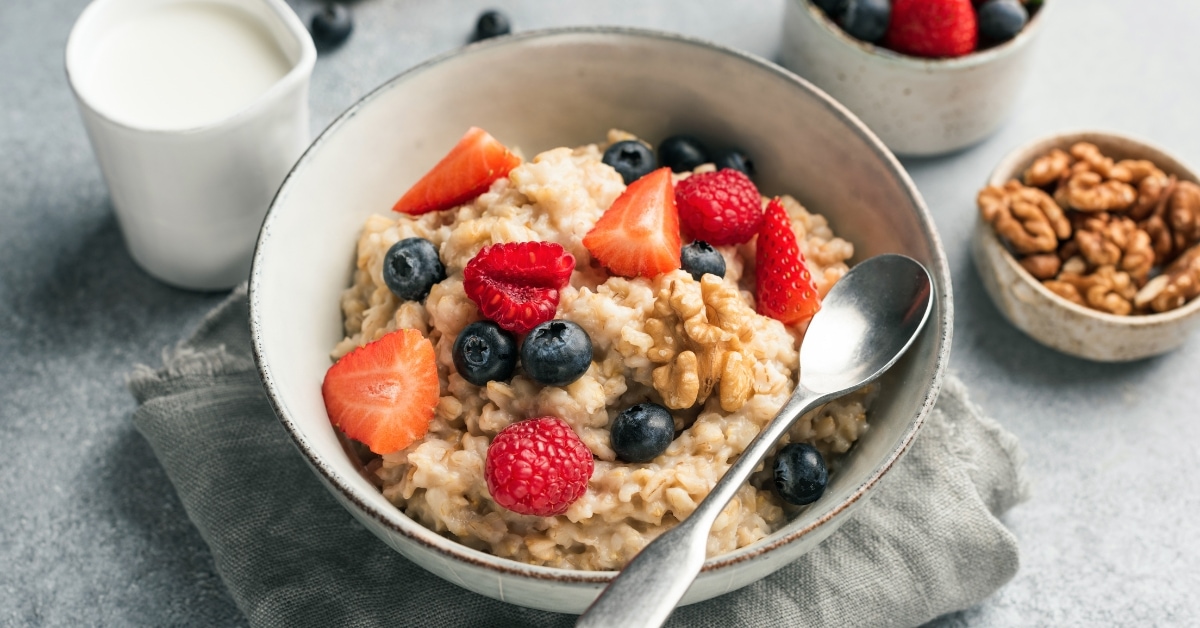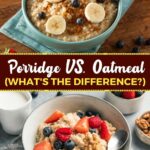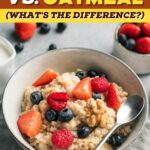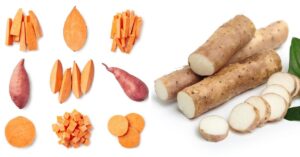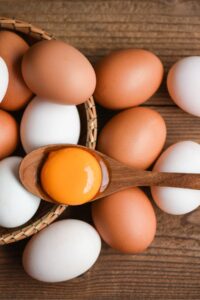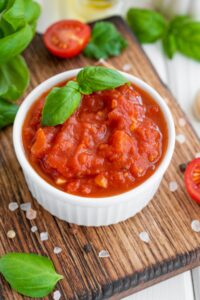Ah, the age-old debate: porridge vs. oatmeal. What’s the difference? And which is better?
Let’s dive into the topic and see if there’s a clear winner.
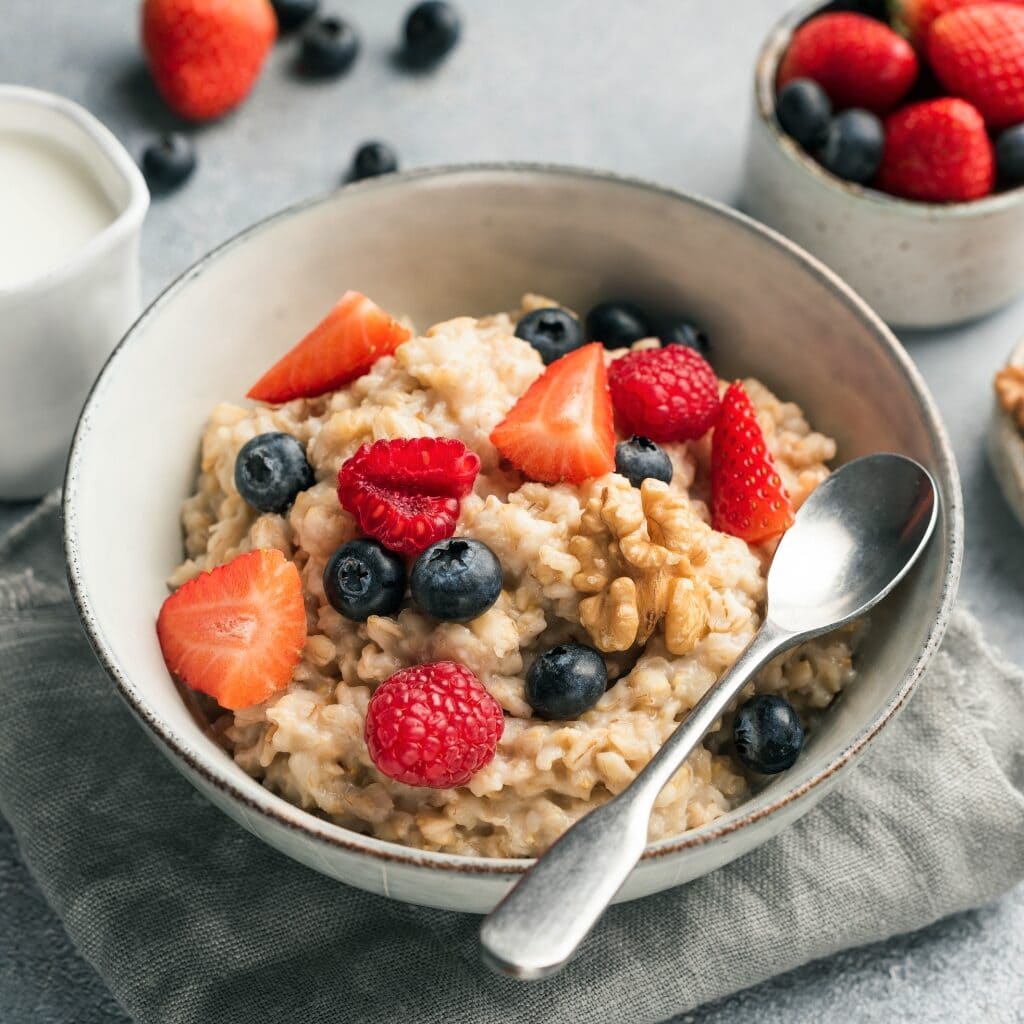
If you’ve ever pondered the differences between porridge and oatmeal, this post is for you!
In it, I’m diving into these two everyday breakfast meals. I’ll explain what they are and precisely what makes them different from one another.
We’ll even examine the different types of porridge and oats.
So let’s look at the key points of difference between porridge vs oatmeal.
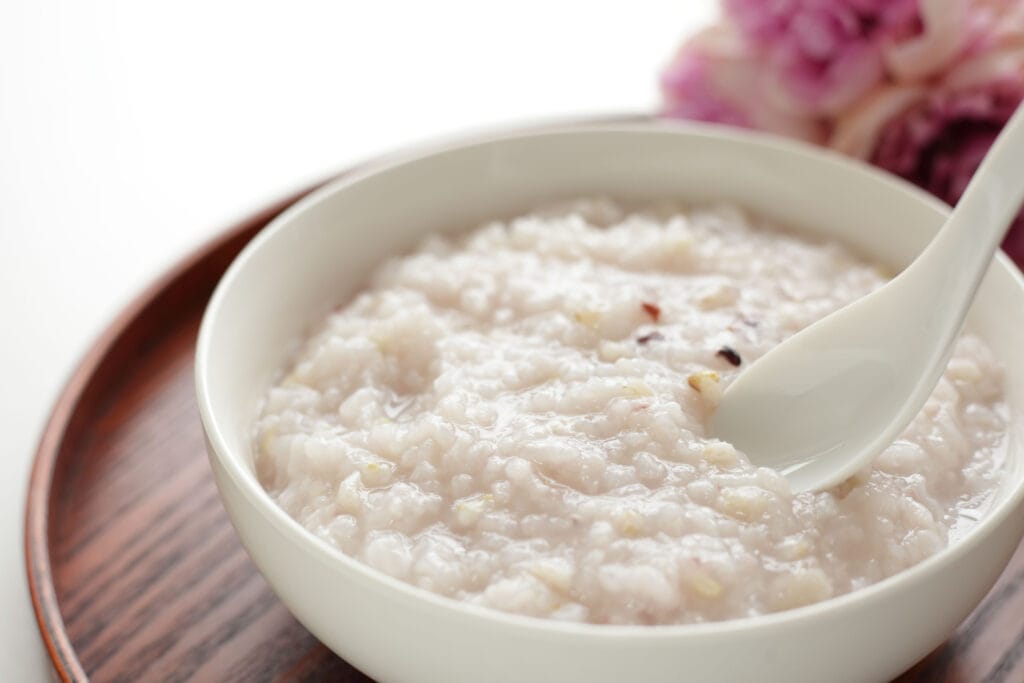
What Is Porridge?
Besides knowing that Baby Bear’s was just right, what do you really know about porridge? For a lot of people, the answer is “not much.”
I, myself, never even had porridge until I was in my thirties! It just wasn’t something that found its way to our table often.
Oatmeal and grits, yes. Porridge, not really. (You’ll see the irony of this soon.)
My point is if you don’t know what it is, don’t feel embarrassed. You are in good company. Plus, I’m about to tell you everything you need to know.
Porridge is a type of breakfast food popular all over the world.
It’s traditionally made by heating cereal grains with water or milk until they’re tender. Flavorings include sugar, honey, fruits, spices, meat, vegetables, and cheese.
This cooked hot cereal is often made with oats, known as oatmeal.
Though it can be enjoyed hot or cold, porridge is traditionally referred to as a type of “hot cereal.”
Types of Porridge Grains:
- Oats
- Barley
- Wheat
- Maize/corn
- Rice
- Spelt
- Millet
- Various legumes
Milk makes it creamy, and broth is used in savory recipes. Either way, it’s cooked until thick and somewhat lumpy.
The final consistency depends largely on how processed the grains were before cooking.
Porridges can be sweet or savory, simple or elaborate. And as you’ll see below, it’s also known as oatmeal (when made with oats).
Types of Porridge
Remember earlier when I said you’d pick up on the irony of my statement? This section is about to make it very clear.
You see, here’s the thing about porridge: there are many types. And a couple of the most popular types are oatmeal and grits.
(See. I told you you’d get it.)
So, in fact, porridge found its way to my table all the time. I just didn’t realize it.
Below you’ll find 6 different types. And while these aren’t the only types of porridge, they are some of the most well-known.
1. Oatmeal
Oatmeal is a type of porridge made from various kinds of oats.
Most people cook it with milk or water, and it’s one of the creamiest and sweetest porridge types.
2. Grits
Grits are a type of porridge made from dried corn, specifically cornmeal.
Typically, people make grits with water and plenty of butter. They may also add salt, pepper, and cheese.
3. Polenta
Like grits, most polenta is made with cornmeal. It’s a popular Italian savory dish, usually served with cheese and herbs.
Polenta has an interesting texture and is a great source of essential nutrients.
4. Congee
While less popular in America, congee is widely consumed in Asia. It’s a type of porridge made from rice, often served for breakfast.
I like it with leftover pork belly, runny fried eggs, and chopped scallions.
5. Harissa
Harissa, too, is less well-known in the States but it’s hugely popular in Armenia.
It’s a porridge made from wheat (usually dried or roasted) and is served savory. People often use it as a side item for some type of meat.
6. Farina
Another wheat-based porridge is Farina, and you may be more familiar with it than you think.
If you’ve ever had Cream of Wheat, you’ve had Farina. It’s smooth and creamy with a mild flavor.
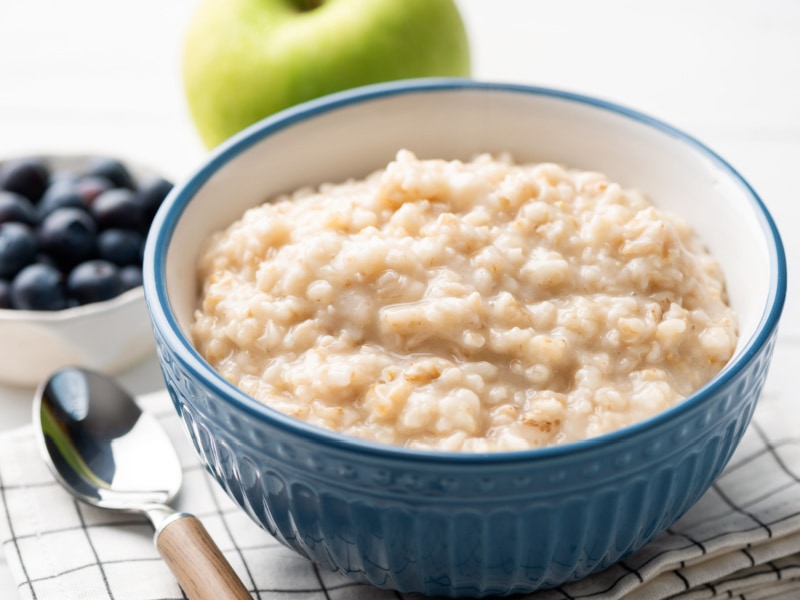
What Is Oatmeal?
Oatmeal is a much more familiar word to most of us than porridge. But funnily enough, as I’ve already mentioned:
Oatmeal is a type of porridge made by boiling oats in water or milk.
It’s most often served for breakfast and sweetened with sugar, fruit, syrup, or honey. Varieties include recipes made with instant oats, steel-cut oats, and rolled oats.
I like it with peanut butter and banana slices. But it’s excellent with leftover pie filling!
Savory oatmeal option does exist, but it’s less common in the U.S.
Made with broth for flavor, along with herbs and cheese, it’s a really lovely breakfast alternative,
And while it’s still carb-heavy, oatmeal is naturally gluten-free*.
The type of oat that’s right for you depends entirely on your personal preference. Dietary needs and restrictions may also contribute to your decision.
Note:
*Some people with celiac disease can suffer symptoms from eating oats due to avenin, a protein found in oats. If you’re unsure, look for brands that specify they’re gluten-free (some oats are processed in flour mills, so there’s always a chance of cross-contamination).
The 7 Types of Oats
You may think this is a silly question. After all, oatmeal is oatmeal, right?!
Well, yes, you’re right about that, but you can make it with different kinds of oats.
In fact, there are seven types of oats. Which one you use to make your oatmeal will determine its flavor and consistency.
1. Instant Oats
Sometimes called “quick oats,” they have a lengthy pre-processing time, meaning you can cook them at home in minutes.
They’re the oats you open from a pack, mix with water, and nuke in the microwave.
2. Oat Groats
Oat groats, or oat berries, are mildly processed oat kernels.
They keep everything about them that makes them oats – the bran, germ, and endosperm. The only thing they lose is their tough outer husks.
They’re an excellent source of fiber and whole grains, but they take up to an hour to cook and are very chewy.
3. Steel-cut Oats
Also known as “Irish oats,” these are smaller sliced oat groats. This process allows them to keep all their health benefits and helps them cook faster.
They still take about 30 minutes to cook and retain the chewiness of oat groats.
4. Rolled Oats
You may know rolled oats by their more popular name – old-fashioned oats. They take their name from the process used to make them.
They are oat groats that manufacturers steam and roll through flattening rollers.
They’re a wonderful mix of chewiness and creaminess and take about 15-20 minutes to prepare.
5. Scottish Oats
These oats are ground to a fine powder and produce the creamiest possible oatmeal.
They’re easy to digest but not as high in fiber as other oat varieties. You can whip them up in about 10 minutes.
6. Oat Bran
Oat bran is the small, flaky outer layer of oat groats.
They’re less nutritious than other varieties but still relatively healthy. They take about 5 minutes to cook.
7. Oat Flour
Oat flour comes from oats that have been ground into a powdered “flour” consistency.
They contain all parts of oat groats – the germ, bran, and endosperm – and have a nutty flavor.
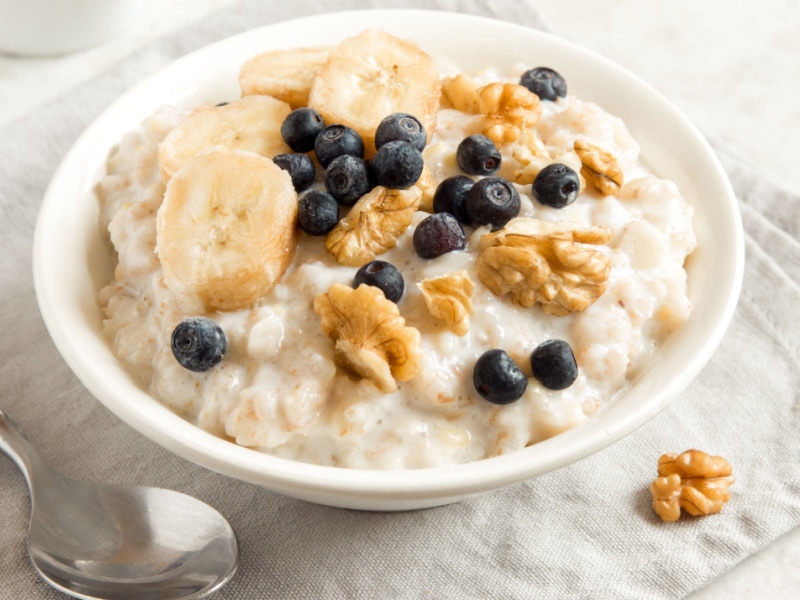
Porridge vs. Oatmeal (What’s the Difference?)
Since oatmeal is a type of porridge, the two have some similarities. However, they also have plenty of differences.
The difference between porridge and oatmeal is that oatmeal must be made from oats, whereas porridge can be made from oats, rice, wheat, or even legumes.
So all oatmeal is a type of porridge, but not all porridge is a type of oatmeal.
Every other difference between the two dishes stems from this main point.
For example:
- The nutritional makeup of porridge made with oats will be very different from porridge made from wheat or rice.
- So will the taste, texture, and consistency.
- There’s also the fact that all oatmeal is gluten-free, whereas porridge made with wheat and barley isn’t.
- Finally, the primary ways of serving the two can be different.
- While savory oatmeal recipes exist, they aren’t nearly as common as sweet ones.
- Porridge, though, is very often savory, like polenta, grits, congee, and harissa.


